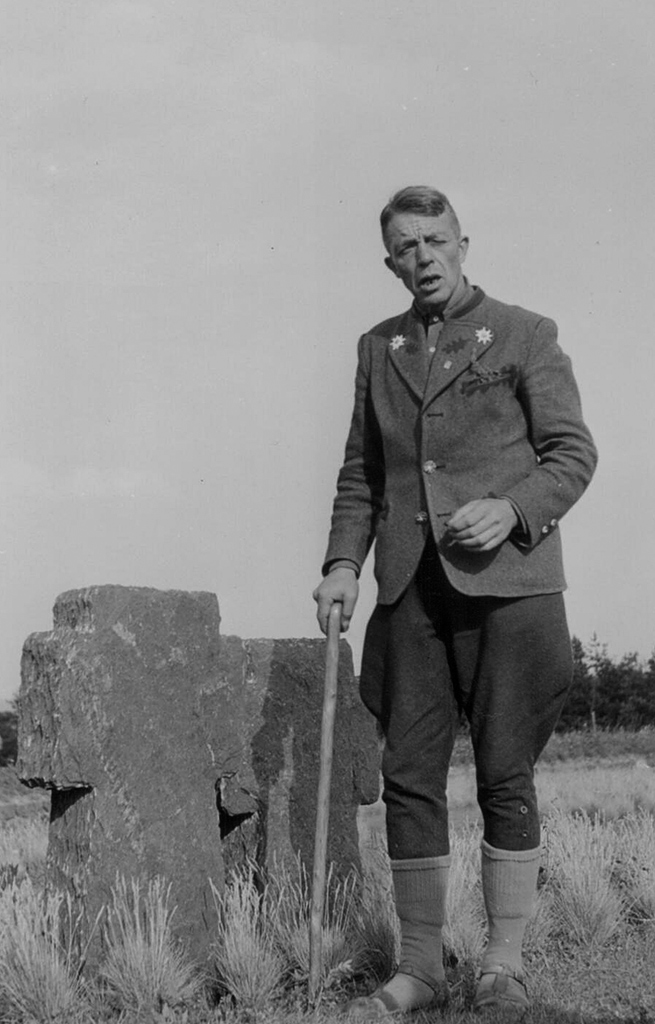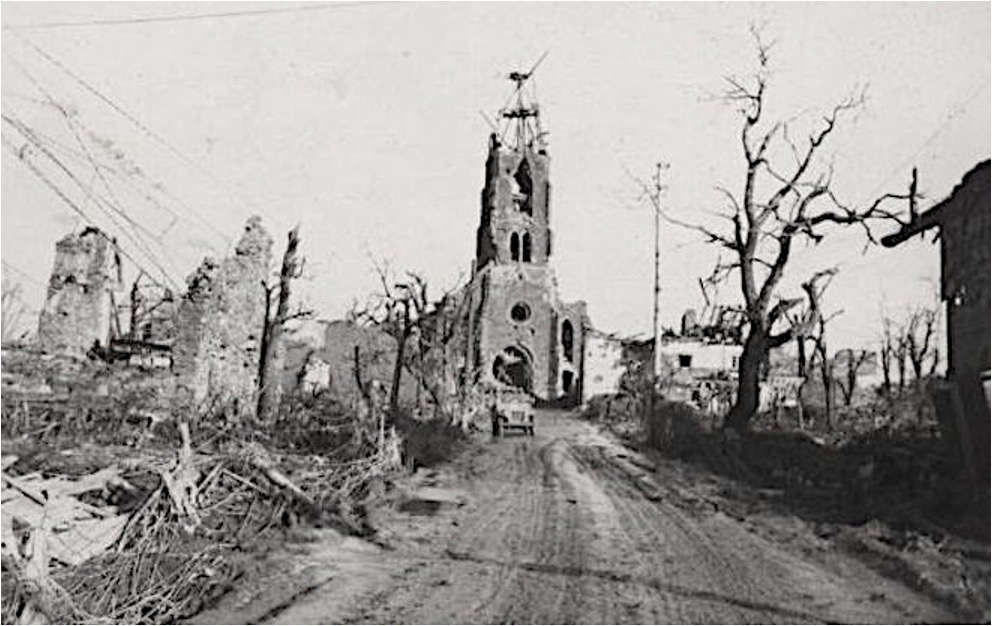- Mestrenger Weg 2, 52393 Hürtgenwald, Germany
In the summer of 1945, the 60-year-old Pionierhauptmann (Engineer Captain) Julius Erasmus returned to Vossenack. Along the roads of the Hürtgen Forest he saw the remains of deceased soldiers. Erasmus couldn’t bare the sight and started burying the dead. He ultimately secured and buried 1569 fallen German soldiers, often risking his own life.
The war had cost the 60-year-old textile manufacturer Julius Erasmus his home, heart and family in Aachen. During the war, he served as Pionierhauptmann in the German Army and was one of the few in his battalion to survive the war. Afterwards he constantly asked himself why he was still alive.
A few months after the war, in the summer of 1945, he returned to the Vossenack woods. Leftover ammunition from the battle was strewn everywhere: phosphorus from hidden booby traps, remnants of bombs, and mines and grenades beneath the surface. It was a deadly place. The decomposing remains of countless dead soldiers still laid between the broken trees. The sight was gruesome. On his own initiative, Erasmus began to bury the dead at the edge of the forest, using simple wooden crosses he made himself. He was soon joined by others, including the town pastor, Dr Werner Eschweiler. Thanks to the pastor’s efforts, the soldiers could now be buried in the municipal cemetery. Erasmus did what he could to determine the identity of each soldier.
As if the battle against the signs of war and nature were not enough, hundreds of hectares of woods in Hürtgen Forest were destroyed by fires in the years after the war. Piles of ammunition went up in flames. The already-destroyed forest became a blackened desert. The dead burned with the woods, hundreds of bodies were charred, but Erasmus and pastor Eschweiler carried on.
Julius Erasmus and his team worked to bury 1569 German soldiers. The final resting place for the fallen is not at the edge of the woods, but in the current military cemetery in Vossenack. Erasmus built himself a simple log cabin at the edge of the cemetery. The ‘father of the dead’ maintained the graves for years afterwards. To this day, a memorial stone in the cemetery keeps his memory alive.



